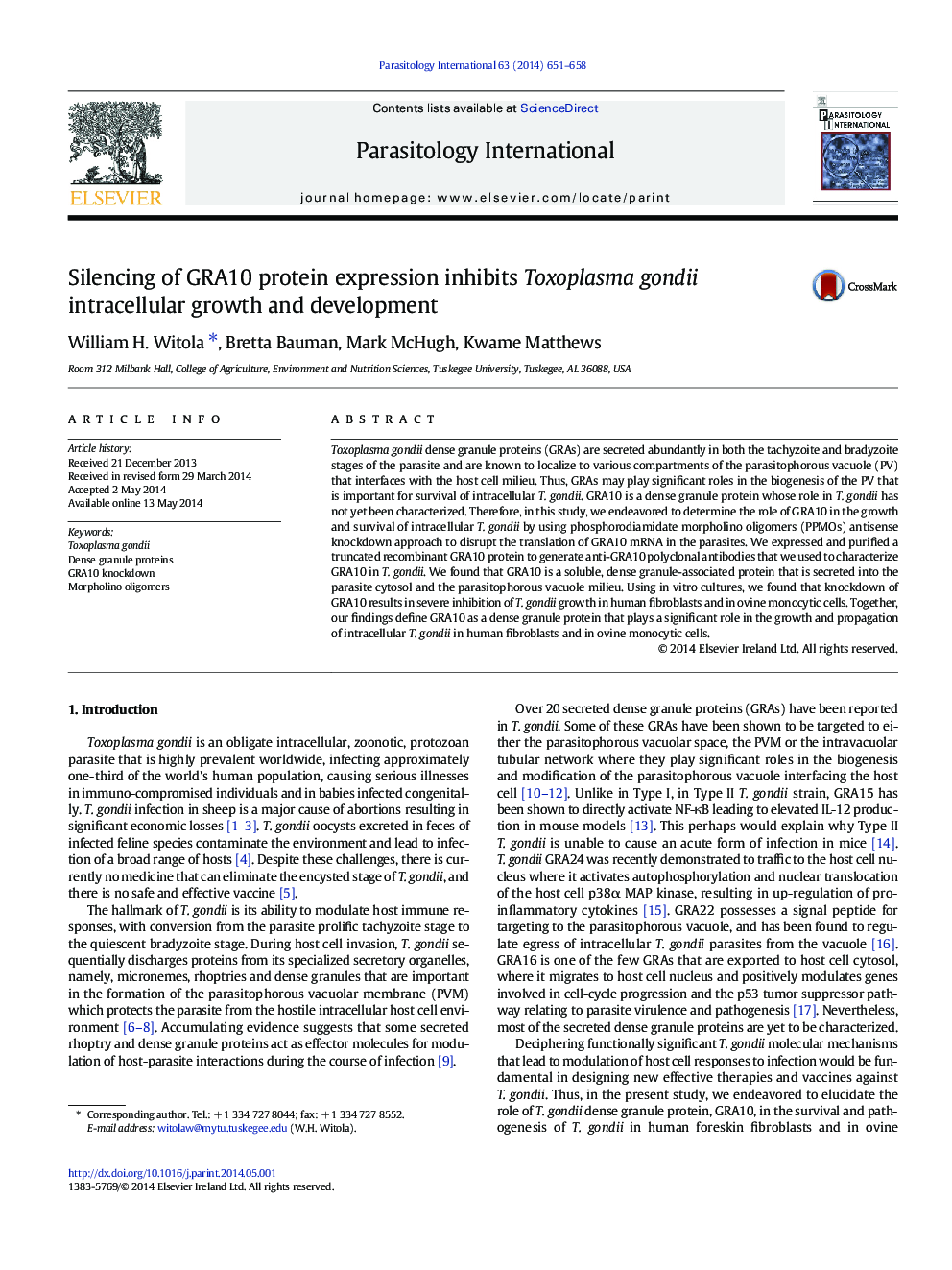| Article ID | Journal | Published Year | Pages | File Type |
|---|---|---|---|---|
| 3417749 | Parasitology International | 2014 | 8 Pages |
•Recombinant truncated GRA10 was expressed and purified for antibody generation.•GRA10 is a dense granule protein.•GRA10 morpholino oligomer effectively knocked-down GRA10 expression in T. gondii.•GRA10 knockdown severely inhibited intracellular T. gondii growth.
Toxoplasma gondii dense granule proteins (GRAs) are secreted abundantly in both the tachyzoite and bradyzoite stages of the parasite and are known to localize to various compartments of the parasitophorous vacuole (PV) that interfaces with the host cell milieu. Thus, GRAs may play significant roles in the biogenesis of the PV that is important for survival of intracellular T. gondii. GRA10 is a dense granule protein whose role in T. gondii has not yet been characterized. Therefore, in this study, we endeavored to determine the role of GRA10 in the growth and survival of intracellular T. gondii by using phosphorodiamidate morpholino oligomers (PPMOs) antisense knockdown approach to disrupt the translation of GRA10 mRNA in the parasites. We expressed and purified a truncated recombinant GRA10 protein to generate anti-GRA10 polyclonal antibodies that we used to characterize GRA10 in T. gondii. We found that GRA10 is a soluble, dense granule-associated protein that is secreted into the parasite cytosol and the parasitophorous vacuole milieu. Using in vitro cultures, we found that knockdown of GRA10 results in severe inhibition of T. gondii growth in human fibroblasts and in ovine monocytic cells. Together, our findings define GRA10 as a dense granule protein that plays a significant role in the growth and propagation of intracellular T. gondii in human fibroblasts and in ovine monocytic cells.
Graphical abstractFigure optionsDownload full-size imageDownload as PowerPoint slide
